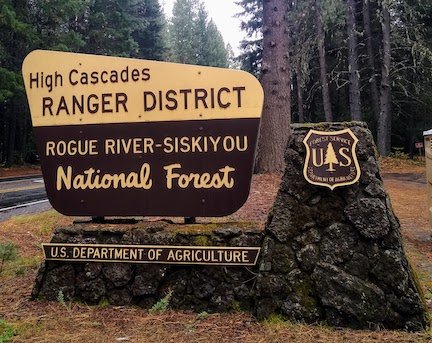The Next Step in Blue Forest’s Relationship with the USFS


With the continued deployment of the Forest Resilience Bond, we are hopeful about the increasing scale of capacity and buy-in for the health and management of public lands. The Challenge Cost Share Agreement positions Blue Forest to be an integral partner to the Forest Service as they pursue the ambitious goals set forth in the 10-year Wildfire Strategy.
Strengthening our Partnership to Develop a Pipeline of Projects Across the Western US
Written by: Annapurna Holtzapple and Jeannie Davidson
In 2017, Blue Forest and the U.S. Department of Agriculture Forest Service (Forest Service) signed a national-level Memorandum of Understanding (MOU) to formalize their partnership and articulate a joint commitment to “exploring the application of innovative conservation finance models to accelerate landscape-scale forest restoration.” Building off the success of the MOU, the partners recently furthered our mutual commitment to shared goals by signing a Challenge Cost Share Agreement (CCSA).
The Agreement not only solidifies the existing partnership, it further enables Blue Forest to support the Forest Service by expanding development of Forest Resilience Bonds with a range of geographic and thematic focuses across the Western United States.
Timing couldn’t be better for this Agreement. Earlier this year, the Forest Service announced its 10-year Wildfire Crisis Strategy. “Collaborative partnerships and financial mechanisms that leverage public and private capital other than Forest Service appropriations are key strategies in the 10-Year Wildfire Crisis Strategy. The CCSA with Blue Forest is helping us achieve these goals, building a foundation for landscape scale restoration across the West,” says Nathalie Woolworth, Conservation Finance Program Manager at the Forest Service National Partnership Office.
The strategy prioritizes fireshed management goals, targeting high-risk areas for priority fuels treatments, while considering community exposure and resilience to wildfires. The announcement calls for an additional 20 million acres to be treated; this expansion creates an opportunity for conservation finance that Blue Forest is excited to support. “We are excited to continue our strong partnership with the Forest Service while we work to diversify our geographic focus and explore new applications for conservation finance to support forest and watershed health,” says Zach Knight, CEO of Blue Forest.
Initially, the CCSA will focus on geographic expansion of the Forest Resilience Bond in Forest Service Region 6 (Oregon and Washington) and Region 1 (Montana, Idaho, and North Dakota), and exploration into the new thematic area of post-fire restoration.
The Agreement advances the partners’ work in these three areas:
Develop an FRB in the Pacific Northwest
Blue Forest is actively engaged in several FRB projects in the Pacific Northwest, focused on fire prevention (Okanogan-Wenatchee National Forest and Rogue-River Siskiyou National Forest) and headwater management (Mt. Baker-Snoqualmie National Forest) at the landscape scale. This dynamic region has dry, fire-prone ecosystems, as well as lush, rain-forested landscapes, which presents an opportunity for wide and varied intersecting benefits of ecosystem restoration. The CCSA will enable advanced FRB development on these three landscapes, building on the exploration, feasibility and early stage development initiated through the 2020 Innovative Finance for National Forests grant program. “Blue Forest has been a vital partner in deploying conservation finance initiatives in Region 6. We are excited that the CCSA can expand Blue Forest’s capacity in the region and support landscape scale restoration efforts,” says Nikola Smith, Pacific Northwest Regional Partnership Coordinator at the Forest Service.
Build Conservation Finance Capacity in Montana and Idaho
Currently in the early stages of project scoping, Blue Forest is working to build relationships with multiple National Forests and engage in high level exploratory assessments of projects and stakeholders in Montana and Idaho. The CCSA supports this work in establishing initial trust, credibility and understanding, and dedicating resources to this new region. Finally, this decision to explore a new region together allows Blue Forest and the Forest Service to determine priorities together, mutually working to best leverage conservation finance interest throughout the landscapes and bringing our specific resources into collaboration at early stages.
Explore Possibilities to Finance Post-Fire Recovery

Blue Forest is also excited to expand implementation for Forest Resilience Bonds to support post-fire restoration, a growing need and time-sensitive window in this arena of resource management that will particularly benefit from the expedited result of conservation finance. There is estimated to be 4 million acres of National Forest Service land in need of reforestation. The 10-year wildfire crisis implementation plan states that the Forest Service has plans to reforest more than 1.3 million acres of NFS land, a significant increase from previous years but only around one-third of the reforestation needed. Blue Forest is currently working with the Central Sierra Resiliency Fund to support forest management and reforestation efforts in areas impacted by the 2020 Creek Fire. The CCSA will enable Blue Forest to expand this work beyond the Creek Fire footprint and strategically assess how conservation finance can support post-fire recovery across a number of landscapes.
With the continued deployment of the Forest Resilience Bond, we are hopeful about the increasing scale of capacity and buy-in for the health and management of public lands. The Challenge Cost Share Agreement positions Blue Forest to be an integral partner to the Forest Service as they pursue the ambitious goals set forth in the 10-year Wildfire Strategy. We are excited to be part of the solution as we look to a promising future of resilient forests, long term protection of our resources, and safe communities.